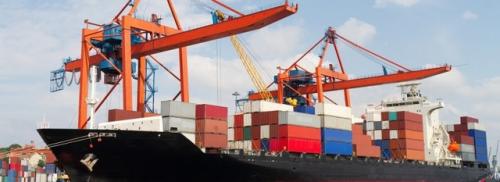China's Trade and FDI in Latin America
China is an increasingly important partner for the countries of the region, now in trade and investment and as a buyer of commodities.
- Análisis

The United States has declared a trade war between the two most important economies in the world, where diverse aspects, technological leadership, markets and the dominant position of economic influence in Latin America are disputed. China is an increasingly important partner for the countries of the region, now in trade and investment, especially in energy in South America and as a buyer of commodities. Recently, China's foreign direct investment (FDI) in electricity distributors in the region has been highlighted.
For analytical purposes, Latin America can be divided into two sub-regions. The first, South America, has China as its commercial axis; without Colombia, Ecuador and Venezuela, which operate like Mexico, Central America and the Caribbean basin, which have the United States as their economic axis. The nuance is that China has improved its position as an important partner in both El Salvador and Mexico in recent years.
Overall, Latin American exports to the U.S. decreased 2% on average between 2014 and 2018 in both sub-regions. Paradoxically, in 2019 there is a South American resurgence with double-digit growth on the part of Argentina, Bolivia and Paraguay, resulting in South America with an average growth of 6%, the same as Mexico, and below Colombia with 8%, while exports from Central America and the Caribbean decline by 5%, Ecuador by 4% and Venezuela by 74%.
Figure 1 shows the exports of both sub-regions to their respective main partners. As can be seen, exports to China have a growing trend since 2012, while the tendency to export to the United States is decreasing.
Despite the dominant U.S. influence in Latin America, China is slowly increasing its economic relationship with the entire region.
Its economic expansion strategy is divided into three: trade flows; capital flows in the form of FDI; and the novelty is the establishment of productive enclaves.
Mexico, Central America and the Caribbean Basin, plus Venezuela, Colombia and Ecuador have a high concentration of U.S. capital and trade. However, since 2010 China has become an important partner for El Salvador mainly in electrical components (capacitors). Between 2010 and 2019, exports of this product are 20 times higher, (from 5.3 MDD to 110.3 MDD). The remarkable thing is that in a region concentrated in only one country, Salvadoran exports to China represent approximately 20% of the total under the heading electrical machines and apparatuses.
This is a clear example of expansion through export of capital and productive and commercial enclaves. This country formally established relations with China and broke its own with Taiwan in 2018. Since then, the U.S. undertook a smear campaign against China in El Salvador, led by the ambassador there. Despite this, China's presence in El Salvador was consolidated with the creation of a special economic zone in July 2018. It is a territory equivalent to 13% of the total Salvadoran national territory. Additionally, they are planning a port concession in the port of "La Unión", which the U.S. embassy has reproached as an intention to establish a military base in Central America. This brings to mind the pretext of the construction of the Granada airport by Cuban engineers as an excuse to invade the Caribbean island on October 25, 1983.
On the other hand, just as China has become a growing trading partner, it has also become an important investment partner. It is particularly relevant for countries such as Ecuador or Peru where Chinese investment represents approximately 25% and 22% respectively, while in Argentina it is 9% and in Brazil it only represents 6% of the total.
South America is a fundamental region for the expansion of Chinese influence in the American continent, far from the Caribbean. FDI has been mainly oriented towards energy (53% of the South American total) and mainly towards Brazil (40%) and mostly energy. One of the important points in the trade war is the energy transition to cleaner sources.
Finally, the eastern presence in Latin America is a challenge to the American domination of the region that it has maintained throughout the twentieth century with invasions and economic policies that have retarded growth to levels never recorded since macroeconomic data were available in the 1940s. The sympathies with a new actor seeking clean energy and arriving with large investments in the region are good news. The entry into El Salvador with a special processing zone is a novelty and the fact that the Salvadoran government did not pay attention to the threats of the American ambassador is a sign of the times. No one in Latin America expects anything positive from the United States, with Pan Americanism at its lowest point in history; but everyone expects the trade war to open policy space for the economy to develop better than it has over the last thirty years.
- Oscar Ugarteche, Senior researcher IIEc-UNAM, SNI III/ Conacyt, coordinator of obela.org
- Arturo Martínez Paredes, Faculty of Economics, UNAM, member of obela.org
Fuente: Observatorio Económico Latinoamericano- OBELA (www.obela.org)
Del mismo autor
- El multilateralismo bipolar 08/03/2022
- Bipolar multilateralism 07/03/2022
- What does 2022 bring? Uncertainty 31/01/2022
- ¿Qué trae el 2022? Incertidumbre 31/01/2022
- The most expensive Christmas of the century... (so far) 20/01/2022
- La navidad más cara del siglo (hasta ahora) 20/01/2022
- Lo que pasó en el 2021 10/01/2022
- What happened in 2021 10/01/2022
- Estados Unidos: el elefante en la habitación 08/11/2021
- The elephant in the room 07/11/2021








